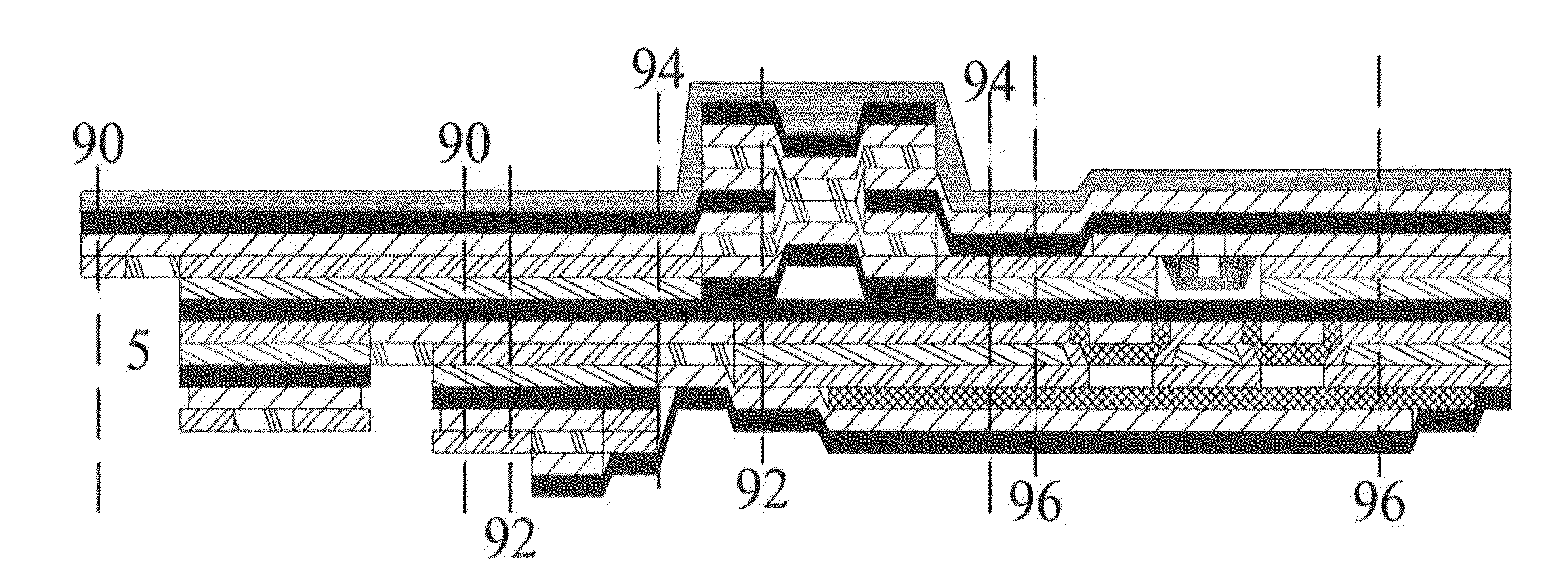Flexible sensing material containing carbon nanotubes
a carbon nanotube and sensing material technology, applied in the field of sensors, can solve the problems of reducing the elastomeric properties of bulk materials, not working well in thin film applications, and reducing the conductivity of bulk materials, so as to increase the conductivity and reduce the effect of conductivity
- Summary
- Abstract
- Description
- Claims
- Application Information
AI Technical Summary
Benefits of technology
Problems solved by technology
Method used
Image
Examples
example 1
[0084]Three films of 5 mil THERMOPLASTIC POLYURETHANE, measuring 19″×23.5″ were dry laminated onto ALUMINUM SHEETS for support during the screen printing process.
[0085]Using the art work in FIGS. 11 through 21 (minus the number indicators added for clarity of the Detailed Description of Invention), each film was printed using polyester screens of mesh size, ink and layer order as noted on the Figures.
[0086]The FLEXIBLE SILVER INK was cured for 10 minutes at 110° C.
[0087]UV CURED CNT CONDUCTIVE INKs were cured with the following UV exposure.
[0088]UVA 249 mJ / cm2
[0089]UVB 210 mJ / cm2
[0090]UVC 60 mJ / cm2
[0091]UVV 185 mJ / cm2
[0092]Film 3 Side B of FIG. 21 was printed first. The film was then turned over and Side A layers of FIGS. 18 to 20 were printed leaving the film ready for mounting the THERMISTORS. THERMISTORS were mounted on the eight pad sets beginning with pads 42 and 40 on Film 3 Side A using CONDUCTIVE SILVER EPOXY and cured for 24 hours.
[0093]Two holes 3 / 16″ diameter and cent...
example 2
[0105]A strip 3 / 16″×1″ of the UV CURED CNT CONDUCTIVE INK was printed between two electrodes and exposed to varying levels of humidity. As the humidity increased the resistance of the strip increased.
PUM
| Property | Measurement | Unit |
|---|---|---|
| Fraction | aaaaa | aaaaa |
| Diameter | aaaaa | aaaaa |
| Diameter | aaaaa | aaaaa |
Abstract
Description
Claims
Application Information
 Login to View More
Login to View More - R&D
- Intellectual Property
- Life Sciences
- Materials
- Tech Scout
- Unparalleled Data Quality
- Higher Quality Content
- 60% Fewer Hallucinations
Browse by: Latest US Patents, China's latest patents, Technical Efficacy Thesaurus, Application Domain, Technology Topic, Popular Technical Reports.
© 2025 PatSnap. All rights reserved.Legal|Privacy policy|Modern Slavery Act Transparency Statement|Sitemap|About US| Contact US: help@patsnap.com



